

Advanced tools for strategic planning and energy efficient operation in public buildings and cities
BEEMind






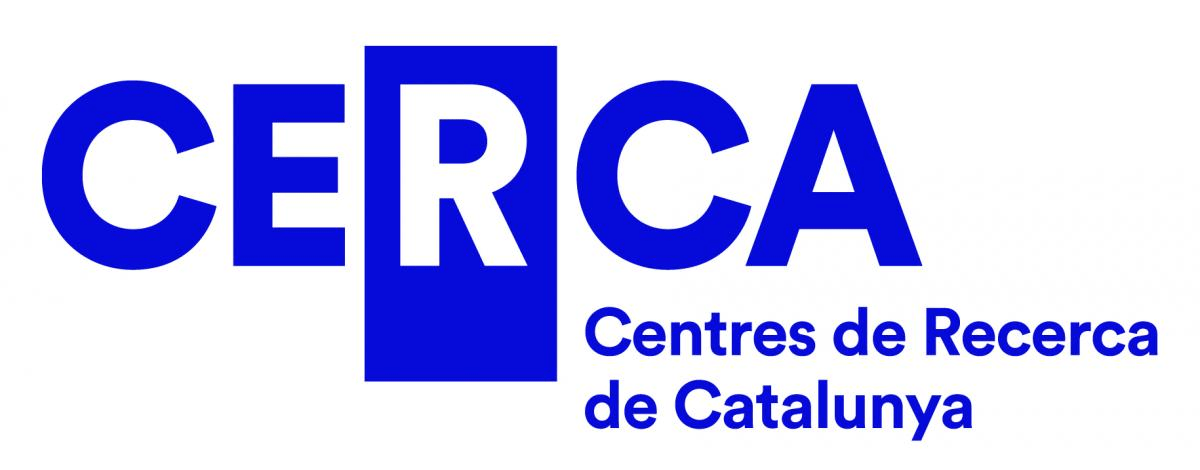



Un consorci de:
En col·laboració amb:
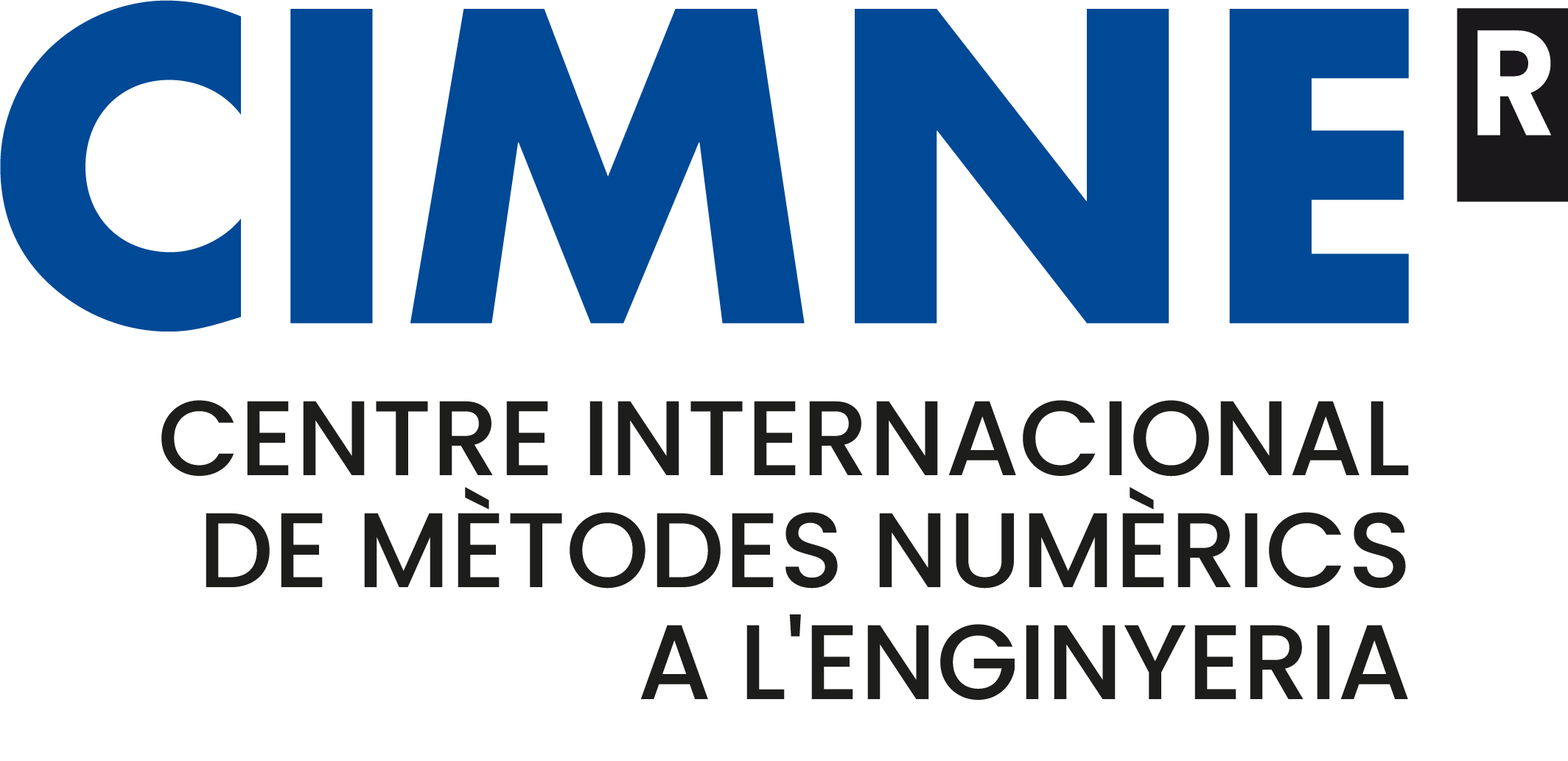


BEEMind
Technology for resilient buildings and cities 4.0
- BEEMind is an AI powered environment that integrates three key pillars: a semantic web technologies to make data fully interoperable, a big data architecture to manage large data volumes, and a set of intelligent tools to analyze, predict, and optimize urban environments.
-
It is structured around the following tools:
- MindCity
- MindOpera

AI-based solutions to enhance climate resilience in buildings and urban environments


MindOpera







BEEMind : MindOpera
Edificis 4.0 : Operativa global d'edificis 4.0
Modular solution for integrating operational data from public or private buildings, with the goal of improving energy efficiency, facilitating maintenance, and centralizing knowledge about their operation.
An essential tool for entities managing multiple buildings: standard data orchestration, predictive maintenance, energy efficiency...
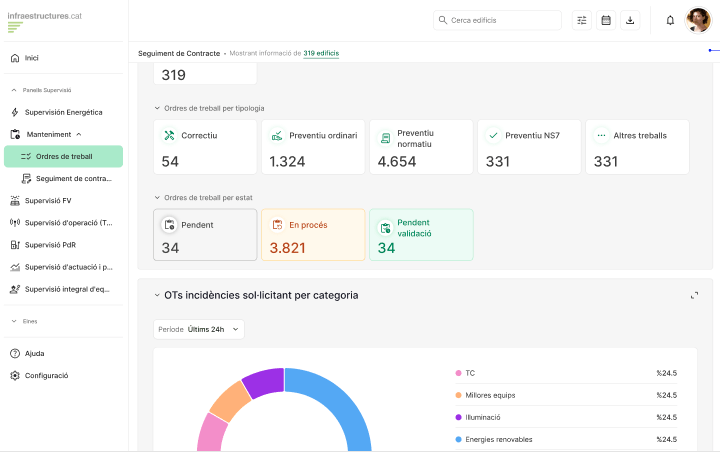
Description
Dashboard administració MindOpera
Monitoring and predictive control
Energy optimization
Operació 4.0 d'edificis


-
Modular cloud architecture
-
Automatic aggregation and validation
-
Multi-building supervision
-
Anomaly detection
-
Predictive maintenance
-
Comprehensive equipment monitoring
-
Semantic standardization
-
Real-time intelligence


BEEMind : MindOpera


BEEMind : MindOpera
-
Integration of heterogeneous operational data (consumption and temperature, maintenance orders, energy efficiency measures, RES generation, cadastre, BIM, and SCADA data)
-
Automatic harmonization of records from multiple sources (Modbus, Bacnet, DEXMA, etc.)
-
Generation of operational indicators (self-consumption, PR, CO₂ avoided, etc.)
-
Adaptable visualizations for each infrastructure
-
AI modules focused on predictive maintenance, control, and energy optimization
Functionalities
Benefits
-
Orchestration and harmonization of large volumes of operational data from buildings
-
Improves overall management of equipment and commercial buildings
-
Reduces supervision time and generates smart alerts
-
HIgh interoperability and communication with management and maintenance systems
-
Suitable for managers of public and commercial building portfolios
Buildings 4.0: Global Operation of Buildings 4.0
BEEMind tools : MindOpera
Use cases
-
Centralized management of technical systems
-
Automatic generation of KPIs and operational alerts
-
Continuous monitoring of HVAC, lighting, DHW, and ventilation systems
-
-
Early detection of anomalies in technical systems
-
Identification of inconsistencies in electricity generation/export or device behavior
-
Real-time performance analysis with interpolation and timestamp control
-
Efficient operation through reduced downtime and failure anticipation
Value
Improves service continuity and prevents penalties due to malfunctioning


Cities 4.0: Environmentally Smart
BEEMind tools : MindOpera
-
Monitoring of PV self-consumption systems
-
Data logging for inverters, statuses, temperatures, irradiance, etc.
-
Performance tracking and calculation of KPIs such as PR, CO₂ avoided, and equivalent households
-
-
Monitoring in multi-building or multi-company scenarios
-
Capacity for progressive data growth and aggregated monitoring
-
High interoperability, failure anticipation, and improved service continuity
Maximizes production and facilitates the justification of subsidies.


Cities 4.0: Environmentally Smart
Use cases
Value

Tecnology BEEMind







big data architecture
BEEMind-ENMA



Big data integration





Ingestion
Harmonization


Ingestion







ENMA in action
Ingestion processes
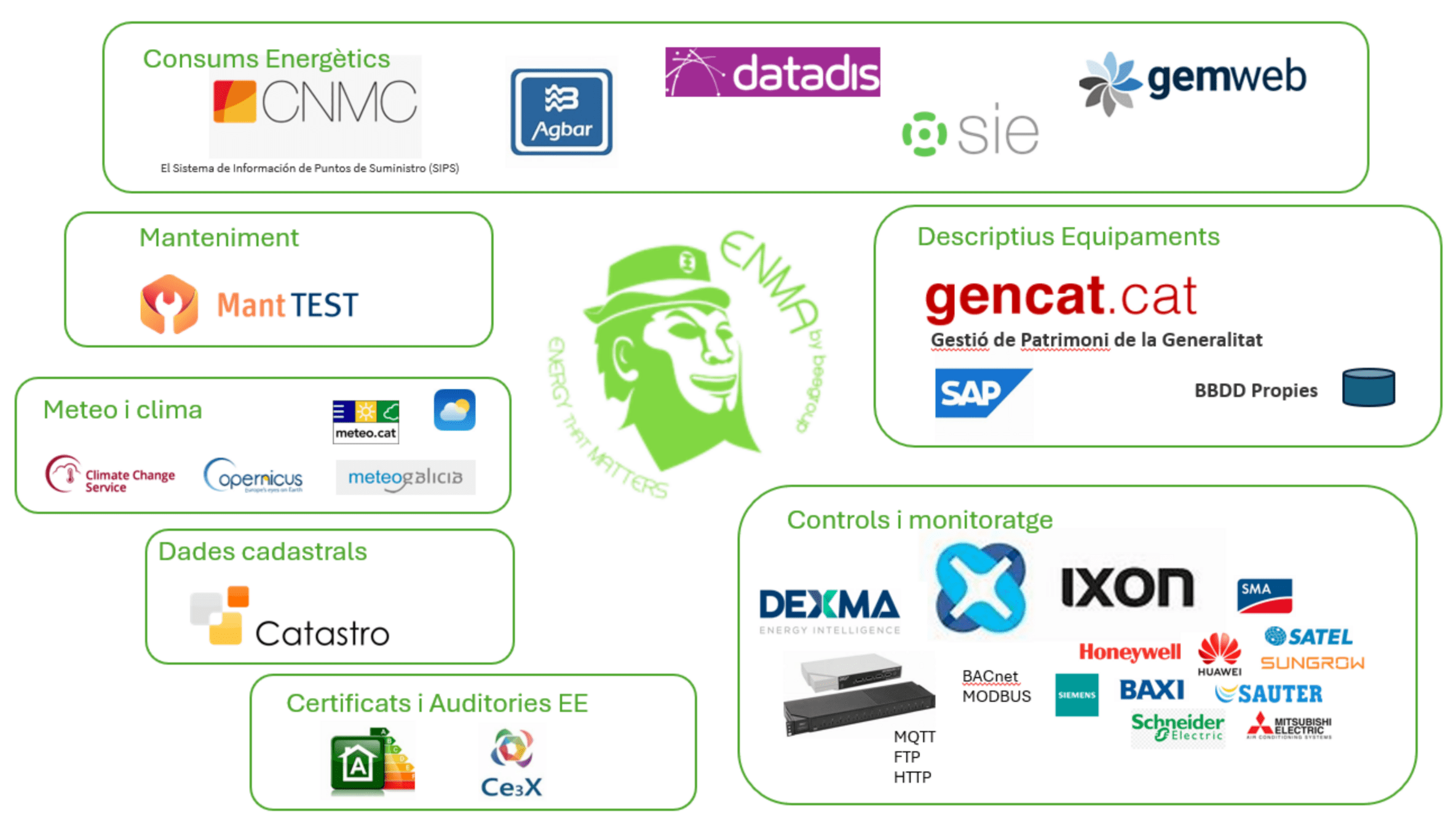
BEEMind: Data ingestion
- Executed manually or periodically
- Reading from websites, files, external databases, or APIs.
- Implemented using Python scripts.
Dades socio-econòmiques


Dades urbanes obertes





Actualització continua dels datasets
Massive data integration
-
IoT sensors via Modbus and BACNET protocols
-
Data from renewable generation systems (PV)
-
Satellite meteorological data
-
Real-time energy consumption
-
Maintenance data (CMMS)
-
Integration with SCADA data sources
-
Cadastral data
-
Data from official inventories

Integració massiva de dades
MindOpera: Data sets used
MindOpera: Data ingestion and integration




Data harmonization







BEEMind: Data ontology
The ontology at the core of our solutions
Applied semantic web technologies:
Understanding and organizing data is as important as the algorithms themselves

Massive data integration


BIGG: the data ontology that links everything from sensors to streets
Reuse
-
saref, s4blg, s4city, s4agri:
- buildings, devices
-
ssn:
- systems, deployments
-
geosp:
- geolocation
-
qudt:
- units
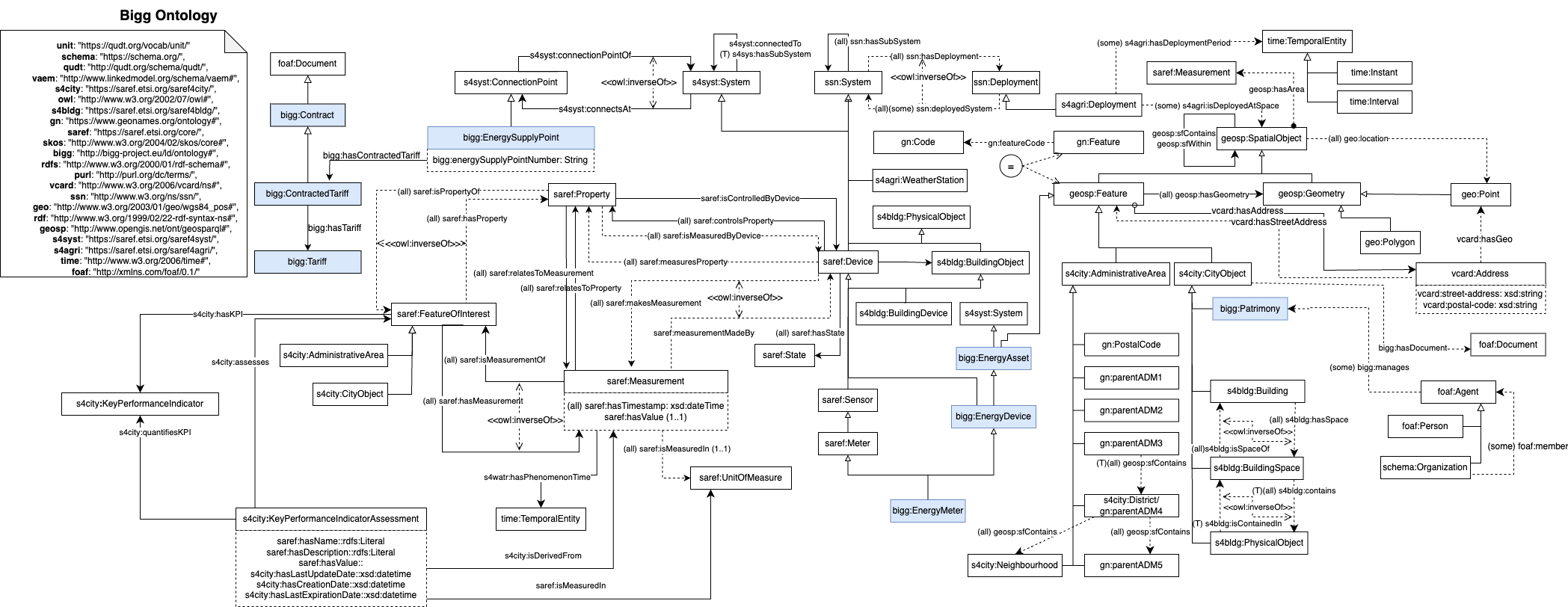
BEEMind: Data ontology
BIGG: the common data ontology
Case studies: iCAT, ICAEN, Aj.Barcelona









The Orchestrator of Infraestructures.cat





MindOpera: Data Orchestrator
Deploy a data orchestration infrastructure for public buildings with monitoring and remote-control systems, integrating structural, operational, and energy data.
Infraestructures.cat
Integrator of all equipment data under the direct management of Infraestructures.cat:
-
Real-time data for optimal operation of hundreds of buildings
-
Data provision to diferent internal and external actors. (Energy department, Maintenace department, clients, etc)
-
Predictive maintenance, anomaly detection, consumption and generation forecasting
- Infraestructures.cat
- CIMNE-BEE Group


Actions
Goals
Main actors
Some KPI
Infraestructures.cat
MindOpera currently supports an ecosystem of over 10,000 equipments, including:
-
1,000 with structured maintenance data,
-
Over 40,000 zones and 100,000 digital assets,
-
More than 1 million work orders processed.
-
It integrates data from over 250,000 IoT devices via protocols such as Modbus and BACnet, collecting real-time information from building control systems.



Dashboard administració
MindOpera: Data Orchestrator
MindOpera: Data Orchestrator


Infraestructures.cat
Tecnology used
This project uses ENMA as the basic infrastructure for BEEMind:
-
Kubernetes enables the management and scalability of deployed services, ensuring high availability and efficient application execution.
-
Apache Kafka serves as a distributed messaging platform, enabling reliable and real-time transmission of large volumes of data between the system's components.
Direct management: Data control and analysis
The main processes are organized into four distinct stages:
A. Data collection
B. Data storage
C. Static harmonization
D. Time series processing
Model intellligence
-
Predictive maintenance
-
Generation forecasting
-
Predictive self-consumption balancing
MindOpera: Data Orchestrator


Tool


Home
Admin Dashboard
MindOpera: Data Orchestrator
The tool


Monitoring: Tracking KPIs



MindOpera: Data Orchestrator
Control and Maintenance
SIME-ICAEN







Integrate and visualize the energy data of all Generalitat facilities (10,000) and support energy savings through data intelligence:
-
Comparison of energy indicators
-
Evaluation of the energy performance of each facility
-
Verification of savings from Energy Efficiency Measures
-
Planning of energy efficiency actions
Institut Català d'Energia
The project
MindOpera: Energy Monitoring System – SIME


Seguiment i avaluació del Pla d’Estalvi Energètic dels edificis de la Generalitat de Catalunya.
Goals
Equipment
supervision
Monitoring and
control of supplies
Monitoring and
control of certificates
and audits
Global energy supervision
Monitoring of
energy efficiency measures
Monitoring of
projects and
actions
Data provision to external services
Data verification
from different
sources
Massive comparison: Energy benchmarking

Institut Català d'Energia
MindOpera: SIME
Centralized management
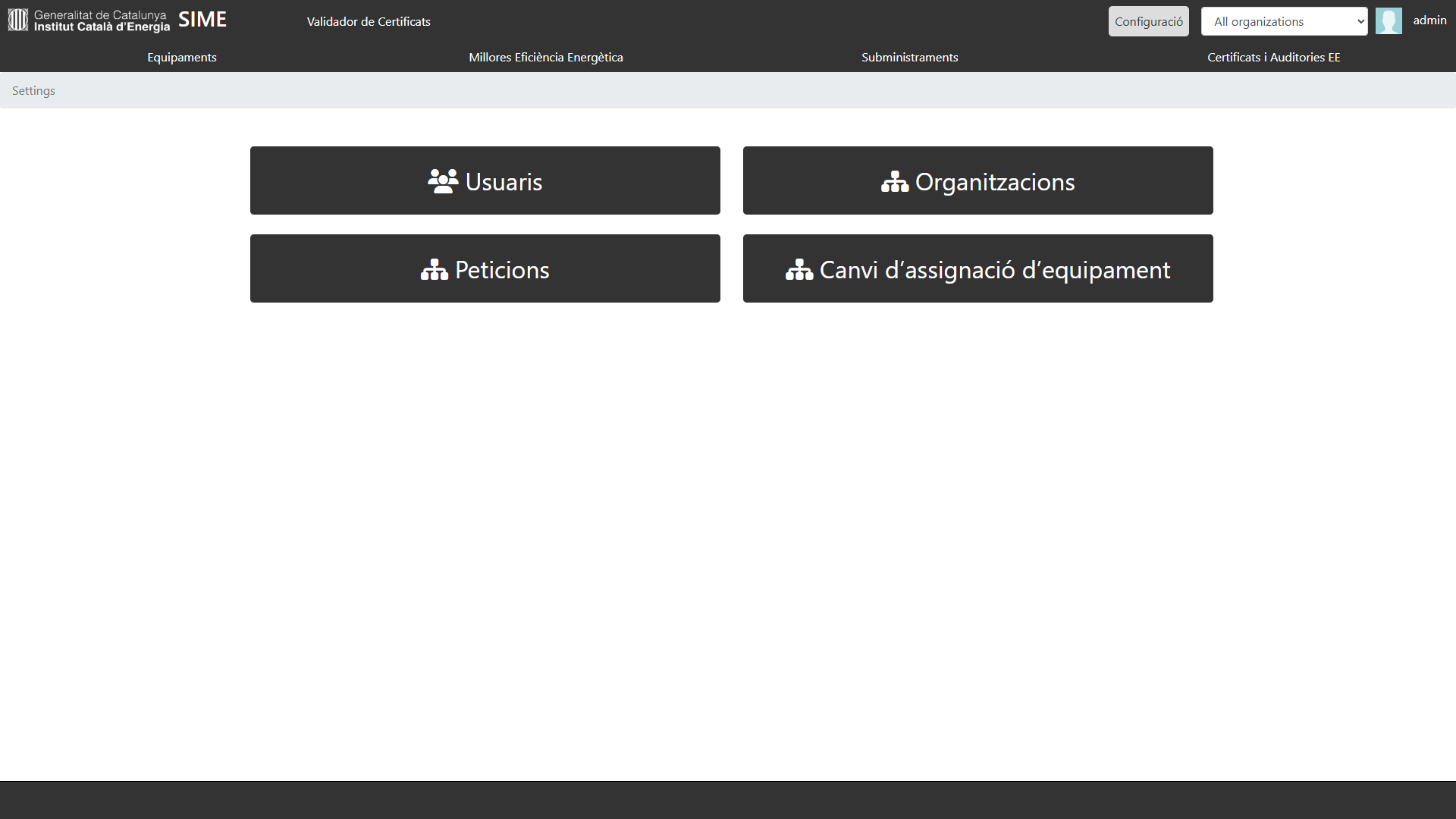
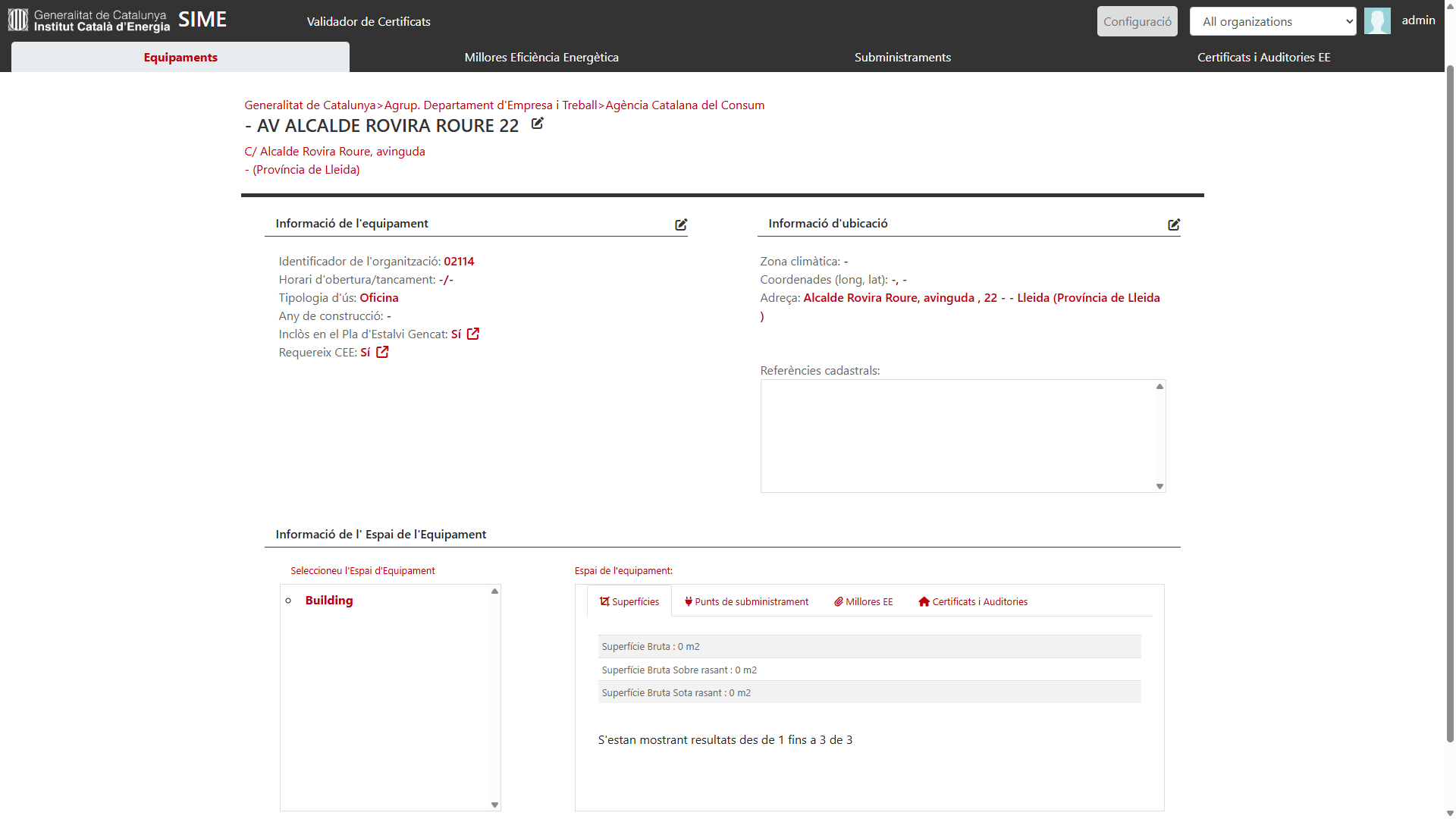


Energy Analytics
Energy Efficiency Measures
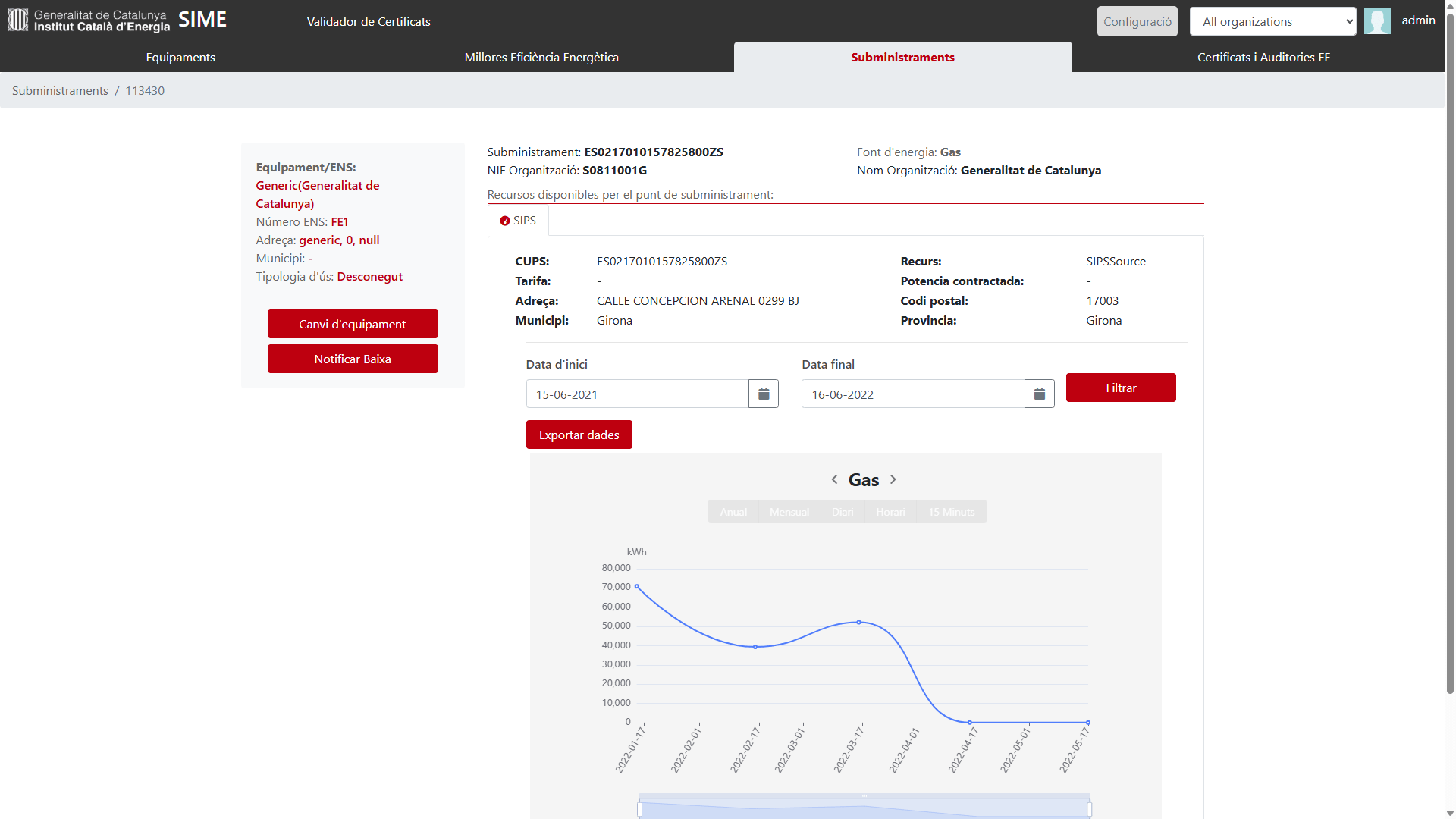
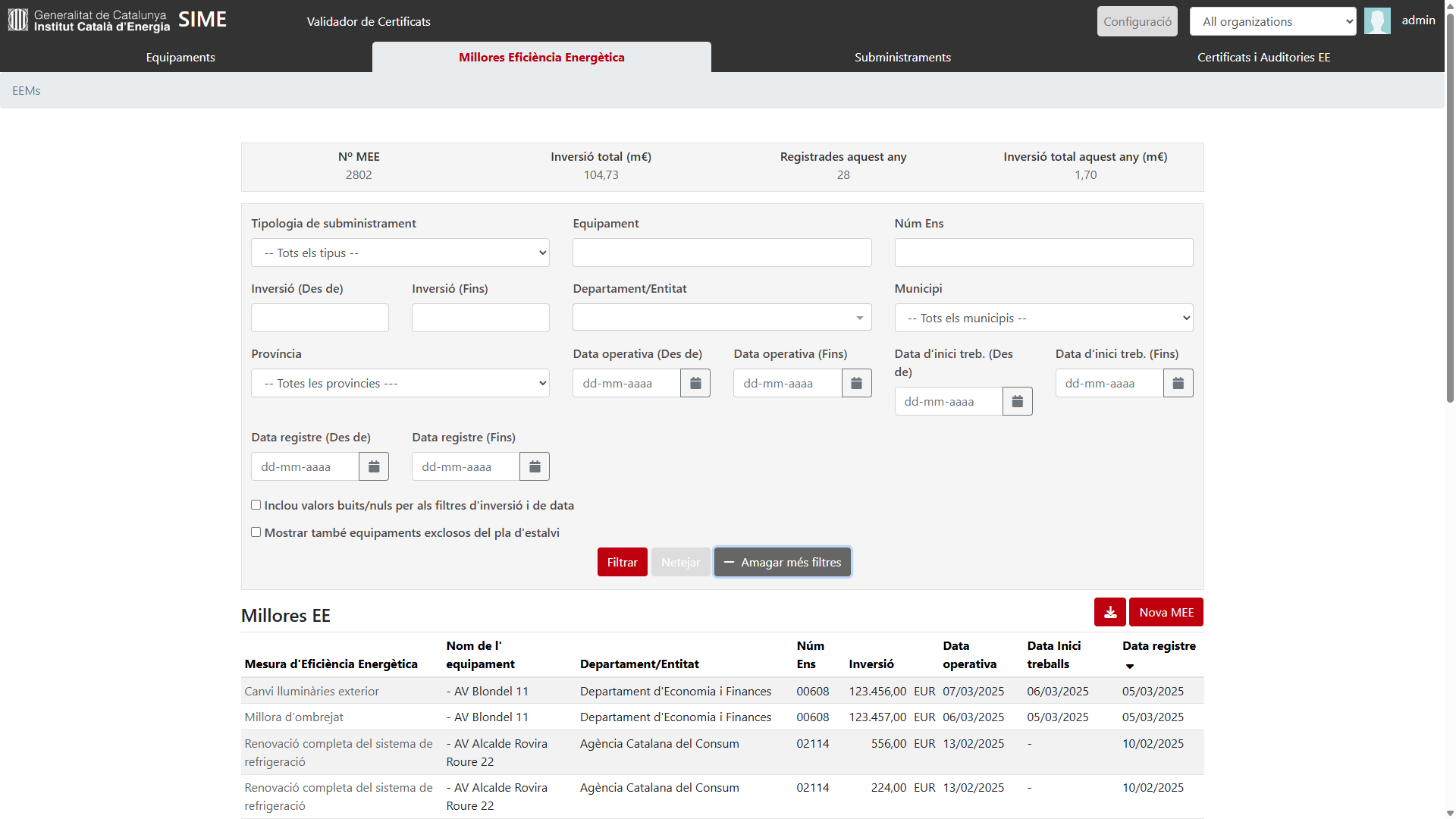



Institut Català d'Energia
MindOpera: SIME


Applied model intelligence (1)
1. Longitudinal benchmarking
What does it do?
Analyzes a building’s energy performance over time to detect trends and assess sustained changes.
Data used:
-
Time series of energy consumption
-
Historical climate data
-
Information on intervention periods (Energy Efficiency Measures – EEMs)
Objectives:
-
Compare energy performance before and after an action
-
Detect changes in energy indicators of individual buildings over time
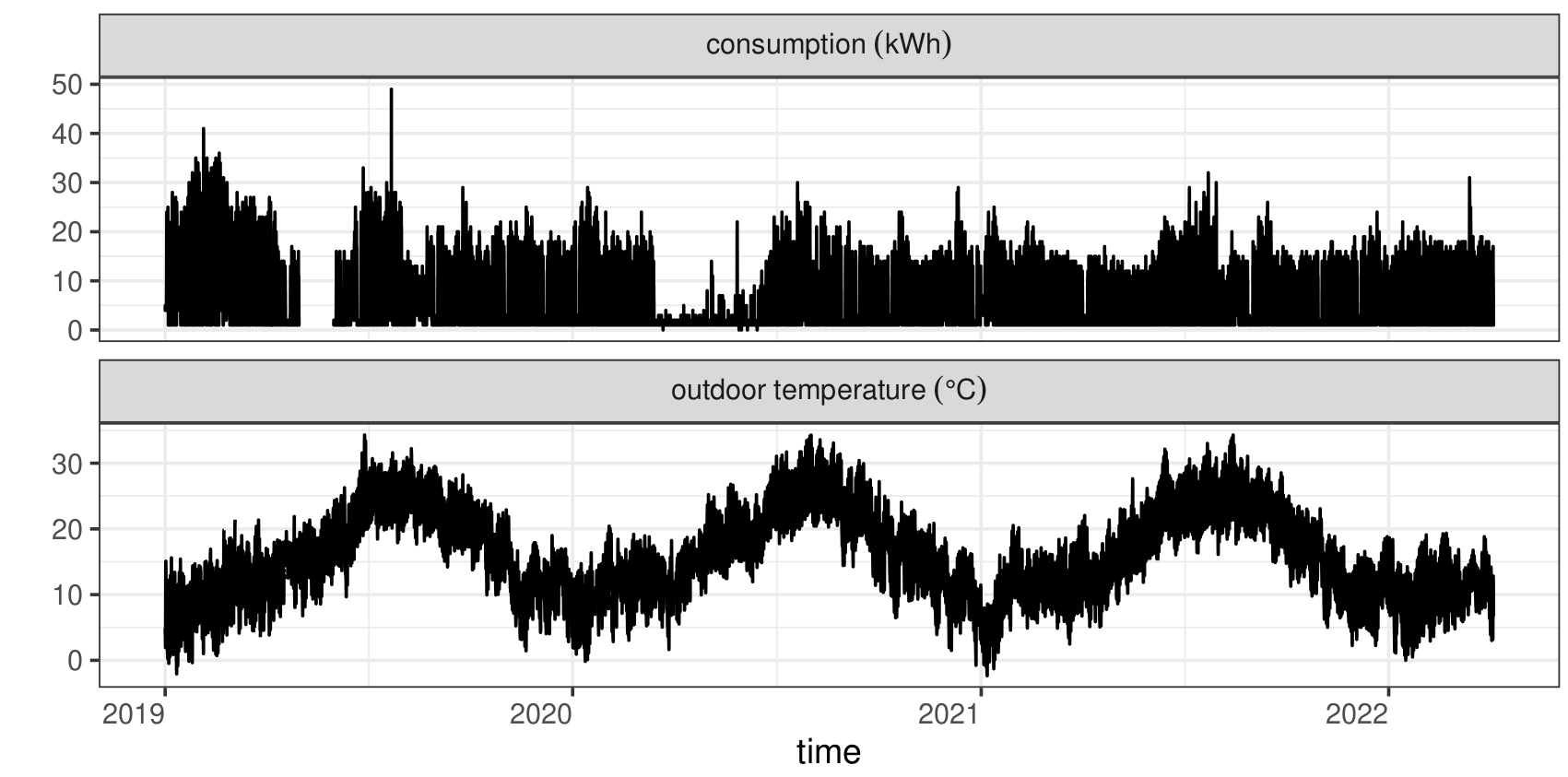
Estimation of the balance point temperature for heating and cooling periods
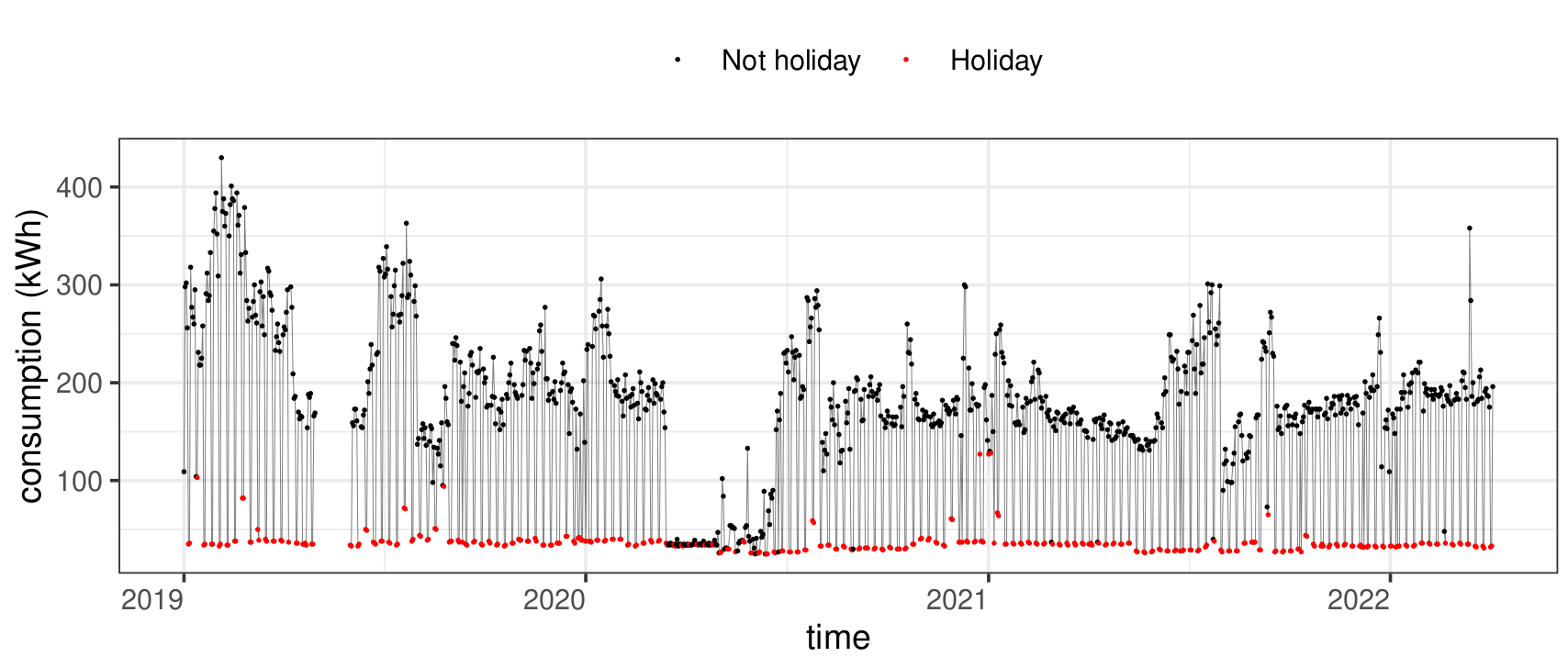
Detection of holiday periods
MindOpera: Data Orchestrator


2.1. What does it do?
Compares the energy performance of multiple buildings at a specific moment to identify inefficient or exemplary performance.
2.2. Data used:
-
Harmonized KPIs per building
-
Static data: use, surface area, climate
-
Typological classification of buildings
2.3. Objectives:
-
Identify best practices and critical buildings
-
Prioritize actions based on comparative performance
-
Generate benchmarks for new projects
-
Cross-sectional benchmarking
Identification and quantification of discrepancies between actual and historical energy consumption

Estimation of the balance temperature for heating and cooling periods
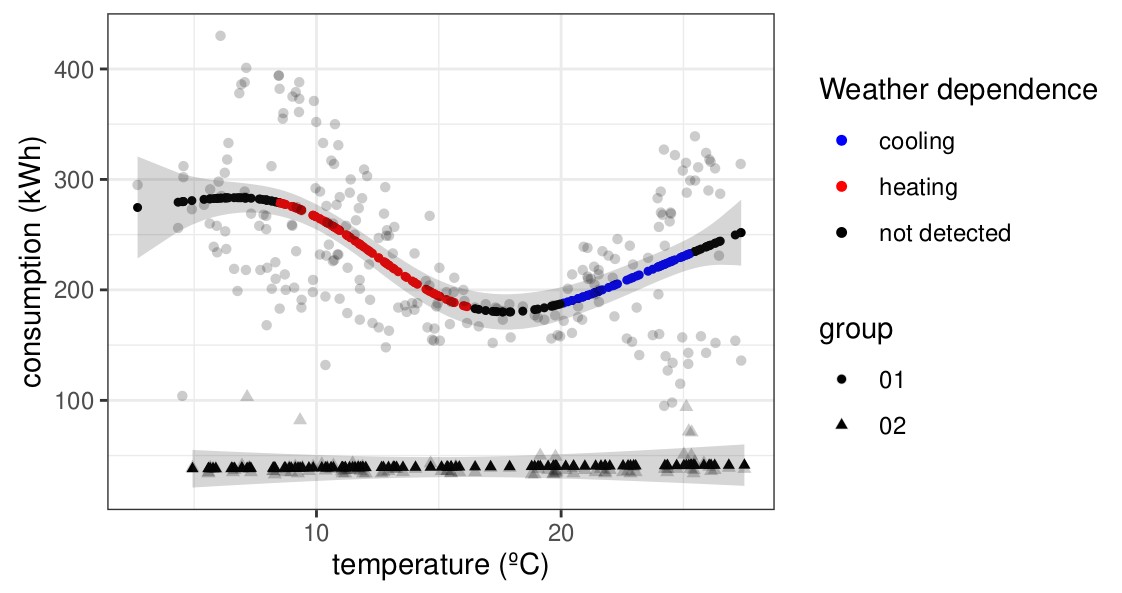
Applied model intelligence (2)
MindOpera: Data Orchestrator


3.1 What does it do?
Evaluates the effectiveness of improvement actions and detects anomalies or deviations in real time.
-
Assess the impact of retrofitting or improvement actions
-
Detect anomalies or deviations in energy performance in real time
-
Action evaluation and operational diagnosis model
3.2 Data used
-
Harmonized time series of energy consumption
-
Technical information from systems (SCADA, CMMS, IoT sensors)
-
Hourly climate data
-
Gas consumption
3.3 Objectives
-
Validate in real time the effectiveness of implemented improvement actions
-
Reduce downtime and operational costs
-
Generate predictive alerts and enable intelligent maintenance

Detailed prediction of efficiency based on the relationship between energy consumption and outdoor temperature
Applied model intelligence (2)
MindOpera: Data Orchestrator
Governance and licensing









Governance and licensing
Commitment to innovation
Public investment in innovation
-
Catalan
-
Spanish
-
European
Economy of scale
Return on investment
-
High initial implementation cost
-
Low maintenance cost
-
Medium- and long-term return
-
No monthly license fees
-
Collaborative software improvement
Self-sufficiency
-
Independence from big tech
-
Commitment to the local tech ecosystem
-
Transparency
License EUPL-1.1
An open public administration
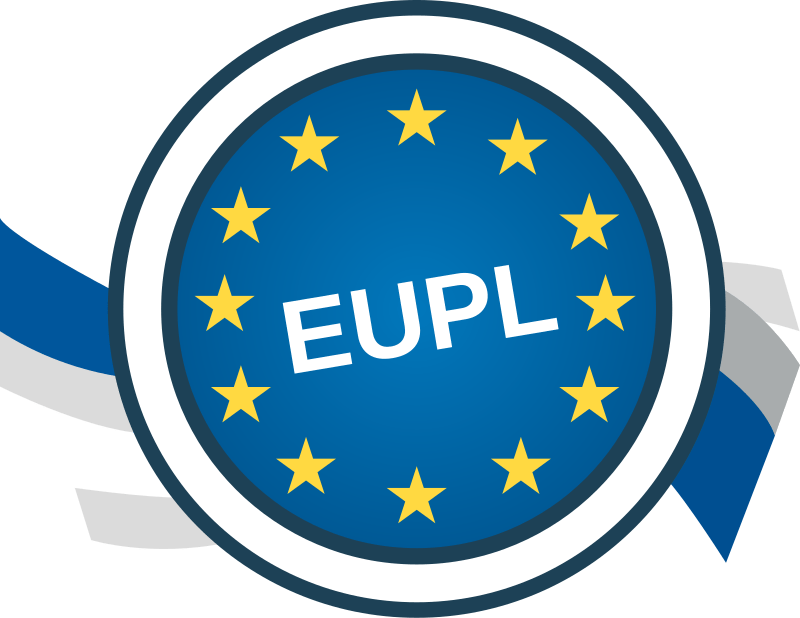


Governance and licensing
License EUPL-1.1
Open-source license promoted by the European Commission, specifically designed for software developed by public administrations in Europe
-
Legal compatibility with the European framework
-
Obligation to share improvements (copyleft)
-
Promotes interoperability and reuse
A solid legal framework that promotes collaboration and continuous improvement of software in the public sector
License EUPL-1.1
Thank you
Jordi Cipriano
Director of Innovation Unit BEEGroup
cipriano@cimne.upc.edu









Mind_Opera_ENG_Technical
By CIMNE BEE Group
Mind_Opera_ENG_Technical
Solucions basades en intel·ligència artificial per a l'augment de la resiliència climàtica en edificis i entorns urbans
- 200



